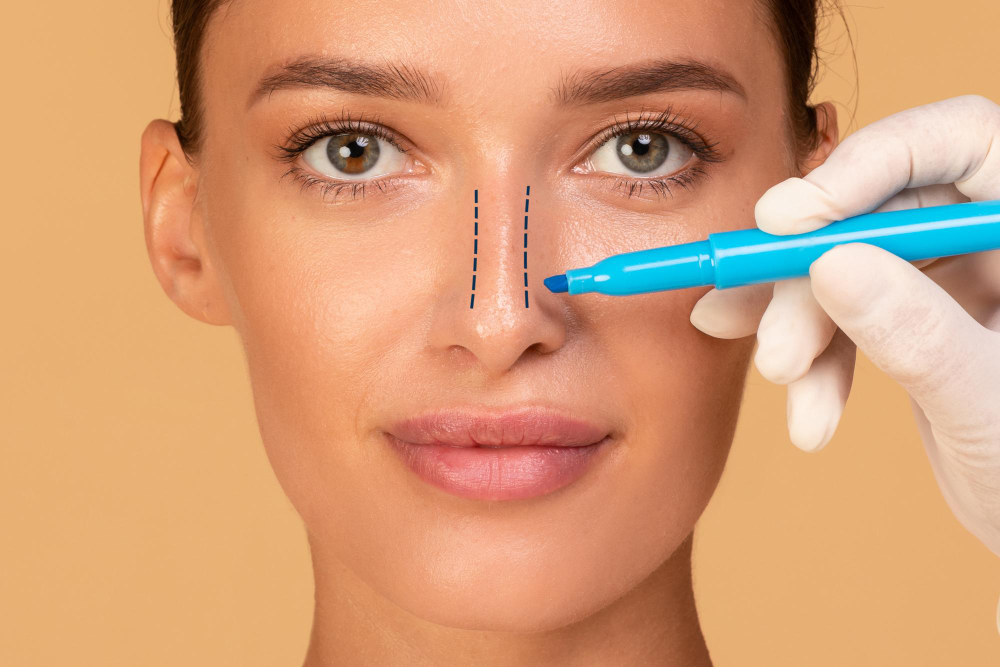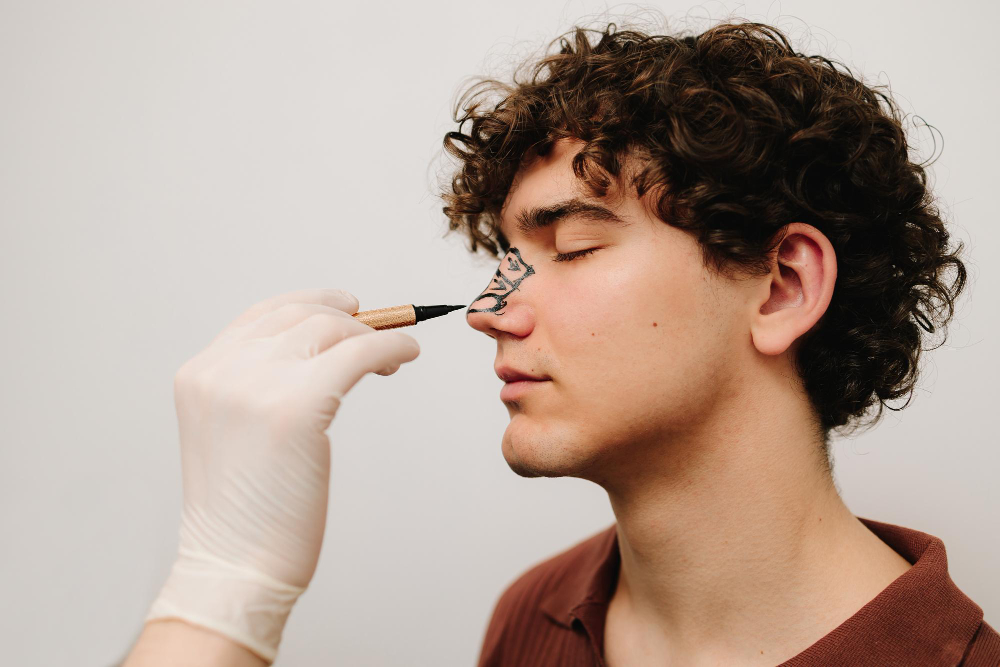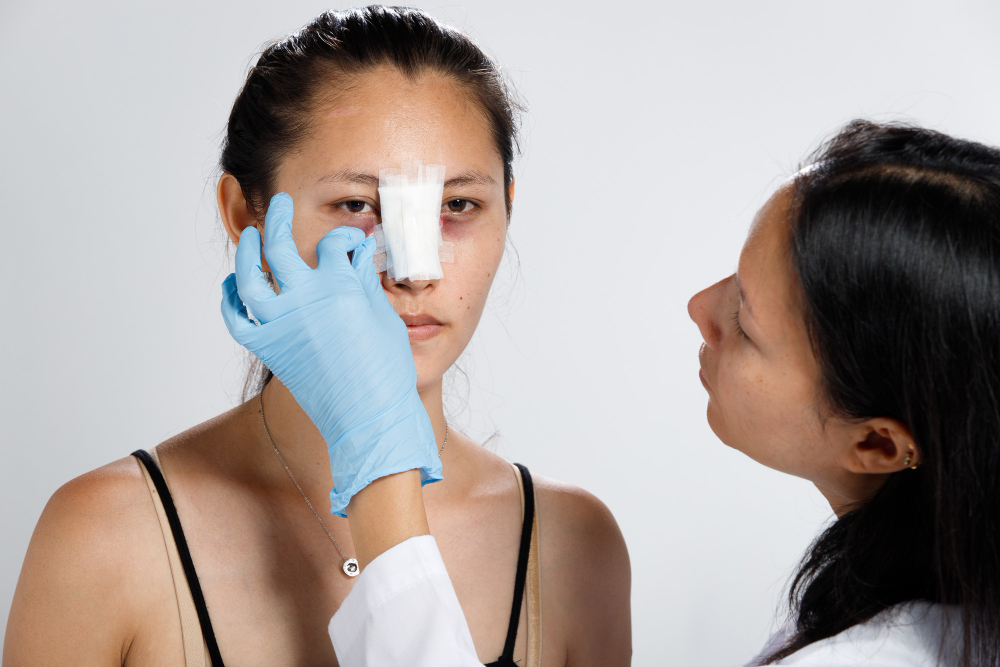Rhinoplasty techniques play a crucial role in the world of cosmetic surgery, offering patients the opportunity to enhance their facial harmony and improve breathing functionality. This type of nose surgery can be conducted using two primary methods: open rhinoplasty and closed rhinoplasty, each with its unique advantages and considerations. Open rhinoplasty involves making an incision under the tip of the nose, providing surgeons with excellent visibility for detailed reshaping, while closed rhinoplasty relies on incisions hidden within the nostrils, resulting in no visible scars. In this article, we will delve deeper into the intricacies of these surgical approaches to help you make an informed decision about your nose surgery.
When it comes to surgical procedures aimed at altering the nasal structure, various terms are often used interchangeably with rhinoplasty, such as nose reshaping and nose job. Rhinoplasty is a specialized surgery that can address both cosmetic and functional nasal concerns, providing patients with a tailored approach to their unique needs. The two prominent methodologies, namely open and closed techniques, represent distinct surgical philosophies, each catering to different complexities of nasal modification. By exploring these alternatives, individuals can gain insight into the best options available for achieving their desired nasal aesthetic while minimizing recovery time. This discussion will equip prospective patients with the knowledge necessary to navigate their rhinoplasty journey confidently.
Rhinoplasty Techniques
Rhinoplasty techniques are crucial in determining the outcomes of nose surgery. The two primary approaches, open rhinoplasty and closed rhinoplasty, offer distinct advantages and challenges. Open rhinoplasty involves making a small incision on the columella, providing surgeons with a direct view of the nasal structure. This visibility allows for more extensive reshaping and correction of complex nasal deformities. Conversely, closed rhinoplasty utilizes incisions made entirely within the nostrils, resulting in no visible external scars. This technique is often employed for less complicated cases, making recovery quicker for patients.

When considering rhinoplasty techniques, it is essential to consult with an experienced surgeon who can assess individual needs. The choice between open and closed techniques will depend on the specific goals of the patient, the complexity of the nasal alterations required, and the surgeon’s expertise. Understanding these options can help patients make informed decisions about their nose reshaping journey.
Open Rhinoplasty: Pros and Cons
Open rhinoplasty is often preferred for patients seeking significant changes to the structure of their nose. The technique allows surgeons to have a complete view of the nasal anatomy, which facilitates more precise adjustments. This method is particularly beneficial for individuals with complex nasal issues, such as those requiring extensive grafting or correction of structural deformities. However, patients should be aware that open rhinoplasty typically comes with a longer recovery period, during which swelling and bruising may be more pronounced. Additionally, while the incision often heals well, there is a possibility of a visible scar at the tip of the nose.
Moreover, patients opting for open rhinoplasty can expect a thorough consultation process where the surgeon will discuss the potential risks and benefits, ensuring they are well-informed. An experienced surgeon can mitigate the risk of complications, making this technique a viable option for those needing comprehensive nose reshaping. Nevertheless, understanding that every surgical procedure carries inherent risks is vital for patient peace of mind.
Closed Rhinoplasty: Benefits and Limitations
Closed rhinoplasty is an appealing option for patients seeking subtle changes to their nasal appearance without the worry of visible scarring. This technique involves incisions made solely inside the nostrils, which not only preserves the skin’s integrity but also speeds up the recovery process. Many patients appreciate this aspect, as closed rhinoplasty typically allows for a quicker return to normal activities compared to its open counterpart. Furthermore, because there are no external scars, many individuals feel more confident post-surgery.
However, closed rhinoplasty does have its limitations. The surgeon’s view of the nasal structure is restricted, which can pose challenges when performing more complex alterations. As a result, this technique is generally recommended for patients requiring minor adjustments rather than significant reshaping. Despite these constraints, skilled surgeons can still achieve impressive results with closed rhinoplasty, underscoring the importance of choosing a qualified professional for the procedure.
Recovery After Rhinoplasty: What to Expect
Rhinoplasty recovery is a critical phase in the surgical process, with patients needing to follow specific guidelines to ensure optimal healing and results. Post-operative care often includes managing swelling and bruising, which can be more pronounced in open rhinoplasty due to the nature of the incision. Patients are typically advised to rest, avoid strenuous activities, and keep their head elevated to reduce swelling. Ice packs may also be recommended to alleviate discomfort during the initial recovery period.

For those undergoing closed rhinoplasty, recovery may be quicker, but patients should still adhere to their surgeon’s post-operative instructions. It is important to monitor for any signs of complications, such as excessive swelling or infection, and report these to a healthcare provider immediately. Regular follow-up appointments are crucial for monitoring progress and ensuring that the nose heals properly, regardless of the technique used.
Choosing the Right Surgeon for Your Rhinoplasty
Selecting the right surgeon for rhinoplasty is a fundamental step in achieving desirable results. Patients should prioritize finding a board-certified surgeon with extensive experience in both open and closed rhinoplasty techniques. It is advisable to review before-and-after photos of previous patients, as this can provide insight into the surgeon’s capabilities and aesthetic style. Additionally, potential candidates should seek out testimonials or reviews from former patients to gauge their satisfaction with the surgeon’s work.
During the consultation, patients should feel comfortable asking questions about the surgeon’s approach, techniques, and expected outcomes. A good surgeon will take the time to explain the process, address any concerns, and provide a clear understanding of what to expect during recovery. This collaborative approach not only builds trust but also empowers patients to make informed decisions about their nose surgery.
The Importance of Pre-Operative Consultation
Before undergoing rhinoplasty, a thorough pre-operative consultation is essential for setting realistic expectations and ensuring patient safety. During this meeting, the surgeon will assess the patient’s nasal anatomy, discuss aesthetic goals, and evaluate any functional concerns related to breathing. This comprehensive evaluation helps identify the most suitable rhinoplasty technique, whether open or closed, tailored to the individual’s unique needs.
In addition to discussing surgical options, the pre-operative consultation provides an opportunity for patients to express any apprehensions or questions they may have regarding the procedure. Surgeons often use digital imaging technology to simulate potential outcomes, allowing patients to visualize the anticipated results. This transparency fosters confidence in the surgical process and promotes a collaborative relationship between the patient and the surgeon.
Post-Operative Care: Essential Tips for Healing
Post-operative care is vital for a successful rhinoplasty recovery. Patients should follow their surgeon’s specific guidelines, which may include taking prescribed medications to manage pain and swelling. Staying hydrated and maintaining a balanced diet can also significantly aid the healing process. Additionally, patients are encouraged to avoid activities that may strain the nose, such as heavy lifting or strenuous exercise, during the initial recovery phase.
Furthermore, protecting the nose from potential injuries is crucial during recovery. Patients should refrain from wearing glasses or sunglasses that rest on the nasal contours for a specified period. Regular follow-ups with the surgeon will ensure that the healing process is progressing as expected, allowing for any necessary adjustments to care plans. Ultimately, taking proactive steps during the recovery phase can lead to a smoother healing experience and more satisfying results.
Managing Expectations: Realistic Outcomes of Rhinoplasty
While many patients achieve significant improvements in their nasal appearance and function, it is essential to acknowledge that results can vary based on individual anatomy and the complexity of the procedure. Open rhinoplasty may offer more extensive reshaping possibilities, while closed rhinoplasty is ideal for subtle enhancements. Patients should discuss their specific goals with their surgeon to align expectations with what is achievable.
Moreover, it is crucial to recognize that rhinoplasty is not an exact science, and factors such as healing time and individual response to surgery can influence results. Patients should be patient and allow time for their noses to heal fully, as the final aesthetic outcome may not be apparent until several months post-surgery. Keeping an open line of communication with the surgeon throughout the recovery process can help manage expectations and address any concerns that may arise.
Common Myths About Rhinoplasty Debunked
Rhinoplasty, like many surgical procedures, is surrounded by myths and misconceptions that can lead to misunderstandings about the process. One common myth is that all rhinoplasty surgeries result in artificial-looking noses. In reality, skilled surgeons strive to achieve natural-looking results that harmonize with a patient’s facial features, whether through open or closed techniques. The desired outcome is often a subtle enhancement rather than an exaggerated change.

Another misconception is that rhinoplasty is only for cosmetic purposes. While many patients seek nose reshaping for aesthetic reasons, rhinoplasty can also address functional issues, such as breathing difficulties caused by structural irregularities. This dual benefit highlights the importance of consulting with a qualified surgeon who can tailor the procedure to meet both aesthetic and functional needs.
Frequently Asked Questions
What are the main rhinoplasty techniques used in nose surgery?
The two main rhinoplasty techniques used in nose surgery are open rhinoplasty and closed rhinoplasty. Open rhinoplasty involves an incision under the nose for better visibility, while closed rhinoplasty uses incisions inside the nostrils, leaving no visible scars.
What are the advantages of open rhinoplasty techniques?
Open rhinoplasty techniques provide the surgeon with better access to the nasal structure, allowing for more precise reshaping and correction of complex nasal issues. This technique is often preferred for significant changes in nose shape and size.
How does closed rhinoplasty differ from open rhinoplasty?
Closed rhinoplasty differs from open rhinoplasty primarily in the incision location; closed rhinoplasty uses incisions solely within the nostrils, resulting in no external scars. However, it offers a more limited view of the nasal structure, making it suitable for simpler cases.
What can I expect during rhinoplasty recovery after open rhinoplasty?
After open rhinoplasty, patients typically experience a longer recovery period due to the nature of the surgery. This may include swelling, bruising, and some discomfort, but most of these symptoms improve within a few weeks. Patients should follow their surgeon’s post-operative care instructions for optimal healing.
Is closed rhinoplasty a suitable option for complex nose reshaping?
Closed rhinoplasty is generally not the best option for complex nose reshaping due to the limited visibility of the nasal structure. Open rhinoplasty is often recommended for more intricate alterations as it allows for greater precision and access.
What risks are associated with different rhinoplasty techniques?
Both open and closed rhinoplasty techniques carry potential risks, including bleeding, infection, and dissatisfaction with the aesthetic results. It’s crucial to discuss these risks with a qualified surgeon before undergoing any nose surgery.
How do I choose between open and closed rhinoplasty techniques?
Choosing between open and closed rhinoplasty techniques depends on factors such as the complexity of the desired changes, the surgeon’s expertise, and personal preferences. A consultation with a qualified surgeon can help determine the most appropriate technique for your needs.
Can I expect scars from closed rhinoplasty techniques?
No, one of the primary benefits of closed rhinoplasty techniques is that they do not leave visible scars, as all incisions are made within the nostrils, making it an attractive option for patients concerned about scarring.
What should I know about the recovery time for rhinoplasty?
Recovery time for rhinoplasty varies by technique; open rhinoplasty typically requires a longer recovery period compared to closed rhinoplasty. Patients can expect some swelling and discomfort, and full healing may take several months.
What factors influence the choice of rhinoplasty techniques?
Factors influencing the choice of rhinoplasty techniques include the complexity of the nasal alterations needed, the surgeon’s experience and preference, as well as the patient’s aesthetic goals and concerns about scarring.
| Technique | Description | Scars | Recovery Time | Usage Cases |
|---|---|---|---|---|
| Open Rhinoplasty | Incision under the tip of the nose and between the nostrils for better visibility. | May leave a small scar at the tip, usually less noticeable over time. | Longer recovery time compared to closed rhinoplasty. | Preferred for more complex nasal changes. |
| Closed Rhinoplasty | Incisions made entirely within the nostrils. | No visible scars post-surgery. | Generally shorter recovery time than open rhinoplasty. | Usually preferred for simpler cases. |
Summary
Rhinoplasty techniques play a crucial role in the success of nose surgeries, which aim to enhance both the aesthetic and functional aspects of the nose. The choice between open and closed rhinoplasty hinges on various factors including the complexity of the case, the surgeon’s expertise, and the patient’s personal preferences. Open rhinoplasty offers greater visibility and precision for complex alterations, while closed rhinoplasty allows for a quicker recovery with no visible scars, making it suitable for simpler procedures. Ultimately, the best technique will depend on individual circumstances, and thorough consultation with a qualified healthcare professional is essential.
















Comments